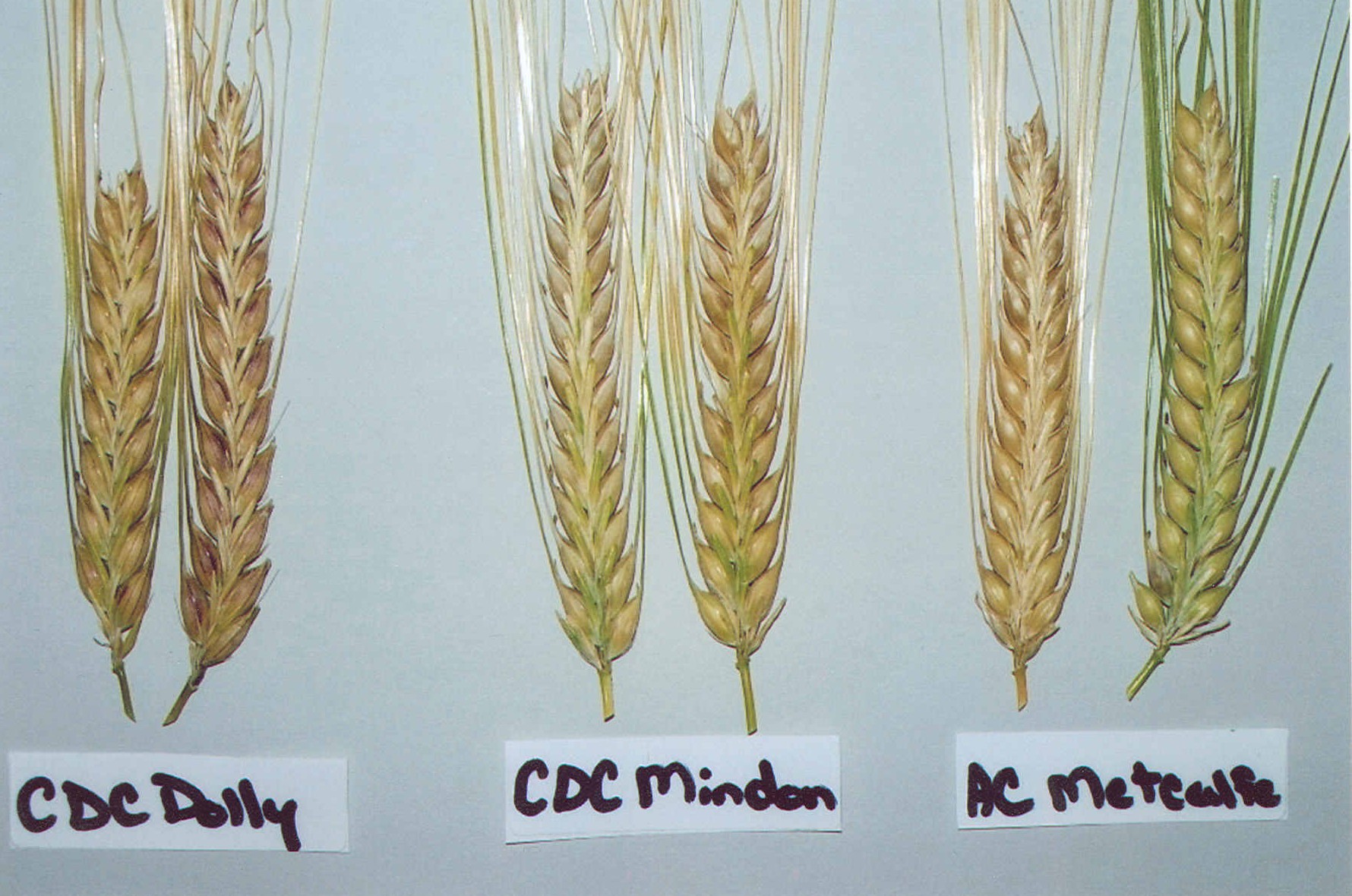CDC Mindon
| Denomination: | 'CDC Mindon' |
|---|---|
| Botanical Name: | Hordeum vulgare |
| Applicant/Holder: |
University of Saskatchewan Crop Development Centre 4D36 Agriculture Building, 51 Campus Drive Saskatoon, Saskatchewan S7N 5A8 Canada |
| Breeder: |
Brian Rossnagel, University of Saskatchewan, Saskatoon, Saskatchewan |
| Agent in Canada: |
SeCan Association 400-300 Terry Fox Drive Kanata, Ontario K2K 0E3 Canada Tel: 613-592-8600 ext.223 |
| Application Date: | 2007-04-27 |
| Application Number: | 07-5903 |
| Grant of Rights Date: | 2008-08-29 |
| Certificate Number: | 3278 |
| Date rights revoked: | 2015-08-29 |
Variety Description
Varieties used for comparison: 'CDC Dolly' and 'AC Metcalfe'
Summary: 'CDC Mindon' has denser pubescence on the flag leaf blade than 'CDC Dolly'. The flag leaf of 'CDC Mindon' has weaker anthocyanin colouration of the auricles than 'CDC Dolly'. 'CDC Mindon' has weaker anthocyanin colouration of the tips of the lemma awns than 'CDC Dolly'. The kernel of 'CDC Mindon' has weaker anthocyanin colouration of the nerves of the lemma than 'CDC Dolly' but stronger than 'AC Metcalfe'. 'CDC Mindon' has stronger spiculation of the inner lateral nerves of the dorsal side of the lemma of the kernel than 'CDC Dolly'. 'CDC Mindon' has better resistance to Spot Blotch (Cochliobolous sativus) and Fusarium Head Blight (Fusarium graminearum; perfect state Gibberella zeae) than 'CDC Dolly' and 'AC Metcalfe'.
Description:
PLANT: two row, spring feed barley, erect to semi-erect juvenile growth habit, green coleoptile, absent to very sparse pubescence on the sheaths of the lower leaves, intermediate growth habit
FLAG LEAF: low to medium frequency of plants with recurved flag leafs, medium to dense pubescence on blade, medium to strong glaucosity on sheath, very sparse to sparse pubescence on sheath, weak to medium anthocyanin colouration of auricles, very sparse to sparse pubescence on the margins of the auricles
SPIKE: very early emergence, cup shaped collar, weak anthocyanin colouration of the tips of the lemma awns, erect to semi-erect attitude, medium to strong glaucosity, parallel shape, medium to dense density, parallel to weakly divergent attitude of sterile spikelet, short to medium length of first segment of rachis, weak to medium curvature of first segment of rachis, the length of the glume and its awn of the median spikelet is shorter relative to the grain, the lemma awns are longer relative to the spike, lemma awns have spiculations over their full length
KERNEL: medium anthocyanin colouration of nerves of the lemma at beginning of ripening, whitish aleurone layer, husk present, long rachilla hair, strong spiculation of inner lateral nerves of dorsal side of lemma, no hairiness on ventral furrow, clasping disposition of lodicules, transverse crease to incomplete horseshoe shape of basal markings, medium to long length, medium to wide width
DISEASE REACTION: resistant to Covered Smut (Ustilago hordei), False Loose Smut, Black semi-loose Smut (Ustilago nigra) and True Loose Smut (Ustilago nuda), moderately resistant to Common Root Rot (Cochliobolus sativus, Fusarium spp.), Spot Blotch (Cochliobolus sativus) and Fusarium Head Blight (Fusarium graminearum; perfect state Gibberella zeae), moderately susceptible to Stem Rust (Puccinia graminis) and susceptible to Net Blotch (Pyrenophora teres) and Scald (Rhynchosporium secalis)
AGRONOMY: good resistance to lodging and shattering, good tolerance to straw and neck breaking, fair to good tolerance to drought
Origin & Breeding History: 'CDC Mindon' was developed by the Crop Development Centre, University of Saskatchewan, Saskatoon, Saskatchewan. It originated from the cross TR339 / TR251 made in 1996 using the pedigree breeding system. The F1 and F2 generations were grown as bulk populations with the F1 grown in a winter nursery in New Zealand during the winter of 1996 and 1997. The F2 was grown as a space planted bulk plot at Saskatoon in 1997. The F3 and F4 generations were grown as single seed derived lines during the winter of 1997 and 1998. It was grown and selected in the field as a F5 hill plot at Saskatoon, Saskatchewan in 1998. The seed from the F5 hill plot was bulked to become 'CDC Mindon'. It was tested in CDC yield trials in 2000-2003 followed by testing in the Western Canadian 2-Row Cooperative trials as TR04378 during 2004 and 2005. Extensive collaboration was done at the FHB/DON screening stage with Agriculture and Agri-Food Canada Stations in Brandon and Ottawa. Selection criteria included resistance to Fusarium Head Blight and DON accumulation, resistance to smuts and stem rust, yield potential, strong straw, plant height, early to moderate maturity and grain quality.
Tests & Trials: Test and trials were conducted during the summers of 2006 and 2007 in Saskatoon, Saskatchewan. Plots consisted of 5 rows per variety with a row spacing of 15 centimetres and a row length of 3.7 meters. There were 2 replicates arranged in a RCB design.
Click on image for larger view

Barley: 'CDC Mindon' (centre) with reference varieties 'CDC Dolly' (left) and 'AC Metcalfe' (right)
- Date modified: